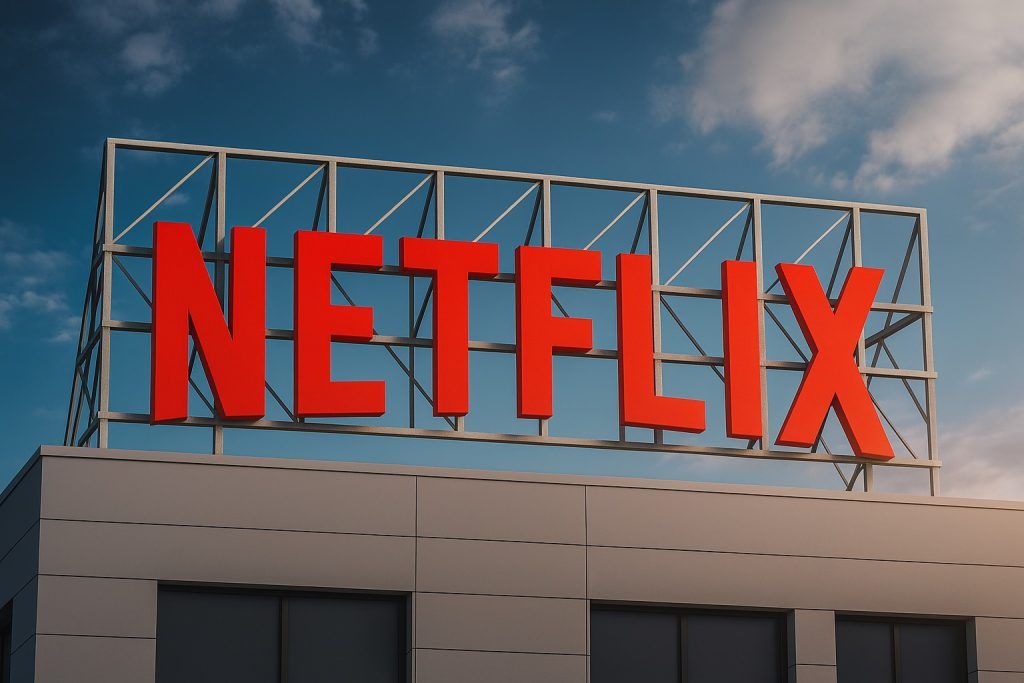StubHub Holdings (NYSE: STUB) shares plunged more than 25% today after the ticket marketplace’s first earnings report as a public company, a deep GAAP loss and a wave of Wall Street price‑target cuts. Here’s what the Q3 2025 numbers and analyst reactions mean for investors.
Key Takeaways
- STUB stock is down roughly 24–26% today, trading around $14 after closing at $18.82 on Thursday, and briefly touching a new 52‑week low near $13. [1]
- Q3 2025 was StubHub’s first earnings report as a public company, with revenue up 8% to about $468 million and gross merchandise sales (GMS) up 11% to $2.4 billion. [2]
- The company posted a GAAP net loss of around $1.3 billion, almost entirely due to a one‑time, $1.4 billion stock‑based compensation charge tied to its September IPO. [3]
- Management declined to give Q4 guidance, blaming shifts in the timing of major concert onsales – the key trigger behind today’s sell‑off. [4]
- Wall Street responded with a flurry of price‑target cuts: BofA downgraded STUB to Neutral with a $19 target, while others trimmed targets but mostly kept Buy/Outperform ratings. [5]
StubHub’s First Quarter as a Public Company: Growth on the Platform, Noise in the P&L
StubHub’s Q3 2025 report is its first full earnings release since going public on the NYSE in September. The headline numbers show a marketplace that’s still growing:
- Gross Merchandise Sales (GMS): $2.4 billion, +11% year‑on‑year. Excluding last year’s Taylor Swift “Eras Tour” effect, GMS growth jumps to +24%. [6]
- Revenue: $468.1 million, up 8% from a year ago and roughly 3–4% ahead of consensus estimates around $452 million. [7]
- Adjusted EBITDA: about $67–68 million, +21% year‑on‑year, with margin improving to 14% from 13%, and beating Street expectations by roughly 15–20%.
On an adjusted basis, StubHub is clearly trending the right way: more volume, higher revenue, expanding margins.
The GAAP headline, however, is brutal. StubHub reported a net loss of approximately $1.3 billion in Q3. Management explained that this was driven almost entirely by a one‑time, $1.4 billion stock‑based compensation charge that had to be recognized at IPO, covering multiple years of employee equity awards under accounting rules.
StreetInsider pegs Q3 EPS at –$4.27, deeper than the roughly –$3 per‑share loss many analysts had modelled.
Under the surface, StubHub used the IPO to repair its balance sheet:
- About $1 billion in gross proceeds between common stock and Series O preferred.
- Roughly $750 million of debt repaid, bringing net leverage down to 3.9× trailing twelve‑month adjusted EBITDA (from ~6.7× at the end of 2024).
- Cash and equivalents of about $1.39 billion at quarter‑end.
At the same time, free cash flow has tightened sharply. TicketNews notes that StubHub generated slightly negative free cash flow in Q3 and only low‑single‑digit millions on a trailing twelve‑month basis, down from more than $500 million a year earlier, as interest costs, capitalised software spend and working‑capital swings all moved against it.
Strategically, management also highlighted a multi‑year partnership with Major League Baseball, which will let StubHub distribute primary MLB ticket inventory via its Direct Issuance technology starting with the 2026 season — an important foothold in primary ticketing against entrenched rival Ticketmaster.
If the Numbers Look “Okay”, Why Is STUB Stock Getting Crushed?
Despite those growth metrics, investors are voting with their feet.
As of early afternoon trading on November 14, 2025, StubHub shares trade around $14.20, down from $18.82 at Thursday’s close – a drop of roughly 24–25% on the day and about 50% below the 52‑week high of $27.89. Intraday, the stock has traded between roughly $13.0 and $15.5, and hit a new 52‑week low.
The slide actually started last night and in the pre‑market:
- Benzinga flagged StubHub as one of Friday’s top pre‑market losers, down around 19% to about $15.25–15.30 after the company reported “worse‑than‑expected” EPS.
- A Finviz/Schaeffer’s Research morning piece described StubHub as “plummeting” more than 20% in electronic trading after the CEO said the company wouldn’t give guidance for the current quarter.
- StreetInsider showed the stock around $14.17, down roughly 24.7%, shortly after midnight when it reported the Q3 EPS headline.
The core issue: guidance, or rather, the lack of it.
On the Q3 call, CEO Eric Baker emphasised that StubHub is seeing a shift in the timing of concert onsales, with “several large tours” that would usually go on sale in Q4 instead moving into late September. Because of this calendar distortion, management refused to provide fourth‑quarter guidance, and pushed detailed 2026 outlook to the next earnings call.
A Stocktwits recap this morning put it bluntly: StubHub shares “tumbled over 26%” after the company declined to give Q4 guidance, citing shifts in ticket‑sale timing.
Analysts at Guggenheim, BMO and Citizens all emphasised that some Q4 demand has been pulled forward into Q3, and that the current quarter faces tough comparisons against last year’s blockbuster events, including Taylor Swift’s Eras Tour and a Yankees/Dodgers World Series.
The net result: investors feel they have very little visibility into the next few months just as a newly‑listed, highly levered ticket marketplace is trying to prove itself.
Wall Street Slashes Price Targets – But Mostly Stays Positive
Friday turned into a wall of research notes on StubHub. The broad pattern: targets down, ratings mostly unchanged.
Here’s a snapshot of today’s notable moves:
- BofA Securities
- Rating: Buy → Neutral
- Price target:$25 → $19
- Rationale: BofA cites valuation concerns after the IPO pop and notes that while Q3 revenue ($468m) and EBITDA (~$67m) beat expectations, StubHub’s 11% GMS growth to $2.44 billion and high 80%+ gross margins now coexist with a more cautious growth outlook and a still‑leveraged balance sheet.
- BMO Capital Markets
- Rating: Outperform (unchanged)
- Target:$30 → $22
- BMO highlights better‑than‑expected Q3, with revenue and adjusted EBITDA beating Street by roughly 3.6% and 16.8% respectively, and notes that GMS grew 11% (24% excluding Taylor Swift), taking StubHub’s share of the North American resale market to around 50%. But management’s comments about softer Q4 and comparison headwinds lead BMO to cut near‑term forecasts. The firm still calls 2026 a potential “breakout year”, pointing to the 2026 World Cup, the MLB primary ticket deal, scaling of direct integrations and advertising momentum.
- Guggenheim
- Rating: Neutral (unchanged)
- Target:$19 → $16
- Guggenheim notes StubHub beat both its own and consensus estimates (revenue $468m vs. $457m/$452m, EBITDA ~$68m vs. $57m/$58m), but attributes much of that outperformance to event‑calendar timing that pulled demand into September. The firm lowers Q4 revenue, GMS and EBITDA forecasts and flags tough comps from last year’s mega‑events.
- Evercore ISI
- Rating: Outperform (unchanged)
- Target:$29 → $27
- Evercore calls Q3 “mixed”: GMS and revenue beat, margins expand to 14%, but EBITDA comes in slightly below its model and, crucially, management still refuses to provide Q4 guidance. Evercore now projects about $677 million in EBITDA for 2026, and still sees upside from current levels but with higher uncertainty.
- Citizens (JMP / Citizens Capital Markets)
- Rating: Market Outperform (unchanged)
- Target:$24 → unchanged
- Citizens says StubHub’s Q3 was strong across GMS, revenue and EBITDA relative to consensus (GMS ~3% above, EBITDA ~16% above), but acknowledges that management’s high‑level commentary and lack of specific outlook forced the firm to trim Q4 and 2026 forecasts. Nonetheless, Citizens maintains its $24 target, signalling continued confidence in StubHub’s long‑term trajectory.
- Goldman Sachs
- Rating: Buy (unchanged)
- Target:$46 → $45
- Goldman trims its target slightly but maintains a bullish view, pointing to ongoing demand for live events and the potential for StubHub’s high‑margin marketplace to compound as more inventory moves online and into open distribution channels.
- Wedbush
- Rating: Outperform (unchanged)
- Target:$25 → $22 (MT Newswires / MarketScreener)
- Oppenheimer, TD Cowen, JPMorgan
- Oppenheimer: Outperform, $23 → $20
- TD Cowen: Outperform, $28 → $25
- JPMorgan: Overweight, $24 → $22
Across this group, only BofA changed its rating, moving from Buy to Neutral. Most others still see StubHub as an outperformer but with trimmed upside, clustering price targets in the high‑teens to mid‑twenties, with Goldman the notable outlier in the mid‑40s.
Earlier data from GuruFocus had the average 12‑month target around $27, implying large potential upside from today’s mid‑teens share price, though that average will likely fall as these new cuts feed into consensus models.
How Weak Were StubHub’s Results, Really?
For a newly public company carrying meaningful leverage, expectations matter as much as the absolute numbers.
From a pure “beat‑or‑miss” standpoint:
- Revenue (~$468m) beat consensus by roughly 3–4%.
- Adjusted EBITDA (~$67m) beat by about 16–21% depending on the firm.
- GMS ($2.44b) came in above Street estimates of about $2.36b.
But:
- GAAP EPS of –$4.27 was notably worse than analysts had pencilled in, which were generally around a –$3 loss per share based on various earnings flash notes.
- StubHub’s free cash flow is now only marginally positive (or slightly negative) despite high gross margins, reflecting heavier sales & marketing spend (up ~27% year‑on‑year), higher interest, capitalised software and working‑capital swings.
- Even after paying down $750 million of debt, the company is still running at about 3.9× net leverage on adjusted EBITDA – improved, but not low.
Independent commentary on Seeking Alpha this morning framed the situation as a classic “growth deceleration vs. leverage” problem: double‑digit GMS growth is now slower than in prior periods, while debt and marketing spend remain substantial.
Put differently: the operating metrics look good, but not good enough to comfortably support a high‑growth, highly leveraged story without clear near‑term guidance.
Regulatory and Industry Backdrop: Another Overhang
StubHub isn’t operating in a vacuum.
- In May 2025, the U.S. Federal Trade Commission sent StubHub a warning letter regarding compliance with its new rule on “unfair and deceptive fees”, ahead of the NFL’s 2025 schedule announcement. The agency has made it clear that ticketing platforms must show total prices up front and avoid junk fees — changes that could affect how StubHub structures and presents its fees over time.
- TicketNews notes that StubHub’s IPO adds a new layer of transparency to a ticketing landscape where heavyweights like Live Nation (Ticketmaster), Vivid Seats and Eventbrite are already public, and SeatGeek is expected to IPO in 2026. StubHub now has to perform under quarter‑to‑quarter public‑market scrutiny, not just compete for fans and inventory.
Meanwhile, the macro backdrop isn’t helping. A Finviz/Schaeffer’s Research report today describes a broad tech and growth stock sell‑off driven by stretched valuations and fresh worries about the Federal Reserve’s rate‑cut path. StubHub, as a newly listed growth name, is getting caught in that downdraft as well.
Valuation Check: What Today’s Price Implies
Using a rough share count of about 312 million shares and a price near $14, StubHub’s equity value is around $4.4 billion. With trailing twelve‑month revenue of roughly $1.3 billion, that puts the stock at about 3–4× sales, before considering net debt.
That’s much lower than where it traded briefly after the IPO, but still not “deep value” territory for a business facing:
- Event‑calendar volatility
- High sales & marketing costs
- Regulatory pressure on fees
- A still‑meaningful leverage load
On the other hand, StubHub enjoys:
- A globally recognised brand and around half of the North American resale market by BMO’s estimate.
- 80%+ gross profit margins and an asset‑light marketplace model.
- New long‑term growth levers like the MLB primary ticket partnership and potential 2026 mega‑events (World Cup, major tours).
Put simply, the market is now asking StubHub to prove it can convert a strong top‑line story into durable free cash flow, under regulatory scrutiny and without the crutch of easy comps from mega‑tours.
What to Watch Next
For investors and industry watchers, a few key checkpoints stand out:
- Q4 2025 performance and any 2026 framework
The single most important catalyst will be StubHub’s next earnings call and whether management finally provides concrete guidance for 2026, including how they see tour calendars, sports schedules and pricing evolving. - Progress on free cash flow
Watch whether StubHub can rein in sales & marketing growth, manage working capital and turn its high‑margin marketplace into consistent, material free cash flow again. - Execution on the MLB deal and other primary partnerships
The MLB Direct Issuance launch in 2026 is a major test of StubHub’s ambition to move deeper into primary ticketing distribution, a space dominated by Ticketmaster. Any additional league‑level or promoter deals would be a key medium‑term positive. - Regulatory developments on fees and resale rules
Any follow‑up action from the FTC or other regulators on “junk fees” or resale caps could affect StubHub’s economics and business model.
Bottom Line
StubHub’s first earnings report as a public company delivered solid operational growth, a one‑time‑distorted GAAP loss, and surprisingly strong adjusted profitability. But refusing to offer Q4 guidance in the face of shifting event calendars and tough comps has deeply rattled investors.
Wall Street’s message today is nuanced: price targets are coming down, sometimes sharply, but most analysts still see StubHub as an outperformer over the medium term if it can execute on its marketplace, primary ticketing ambitions and event calendar catalysts in 2026 and beyond.
For now, STUB is trading like a show that just lost its encore — not cancelled, but with a crowd heading for the exits until the next tour dates are announced.
This article is for informational purposes only and does not constitute investment advice. Always do your own research or consult a licensed financial advisor before making investment decisions.
References
1. www.investing.com, 2. www.businesswire.com, 3. www.businesswire.com, 4. stocktwits.com, 5. ng.investing.com, 6. www.businesswire.com, 7. www.businesswire.com







